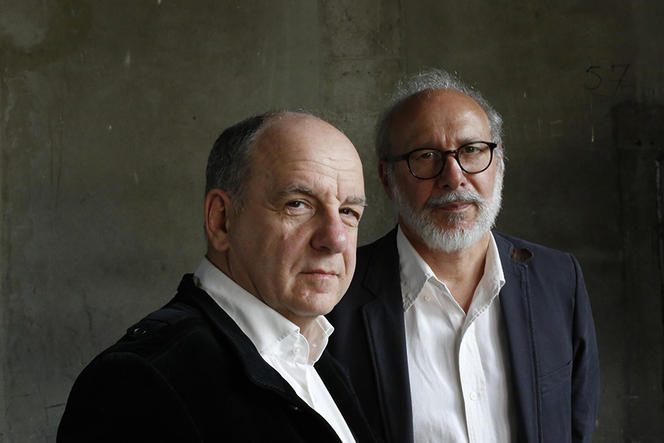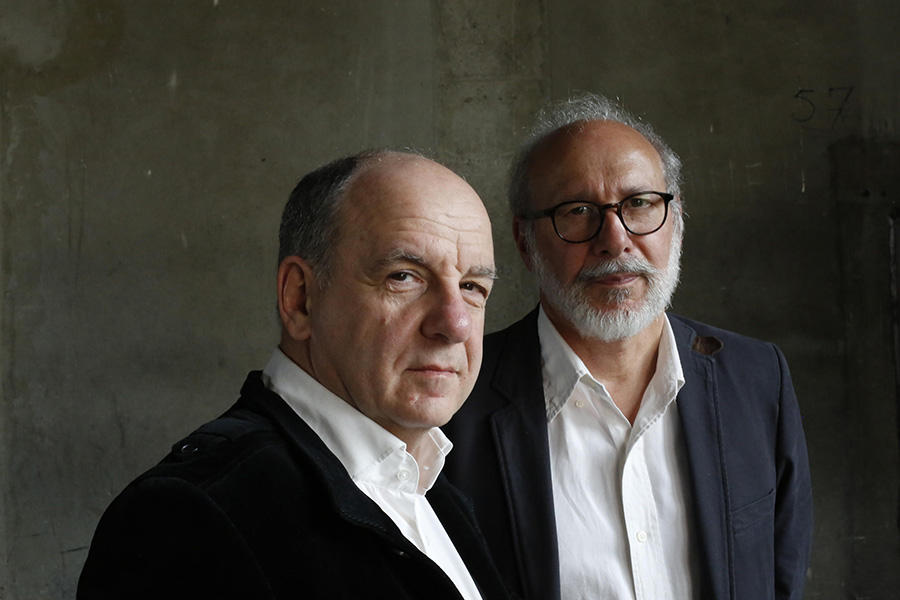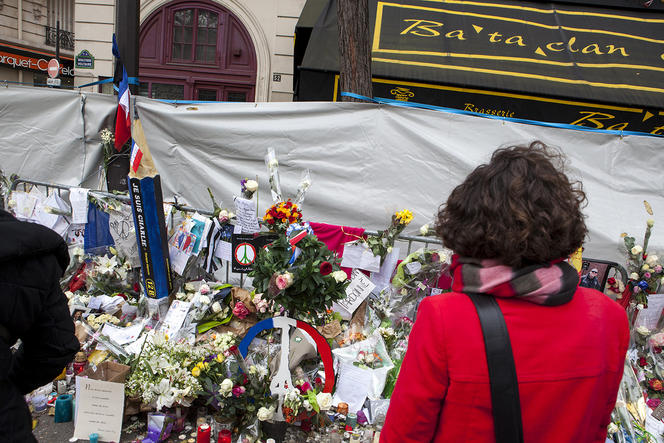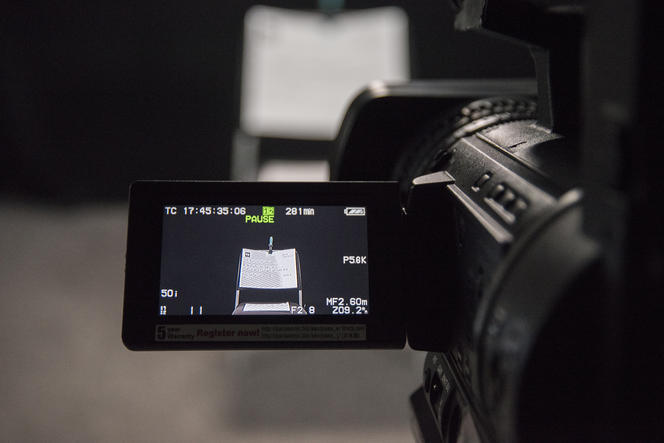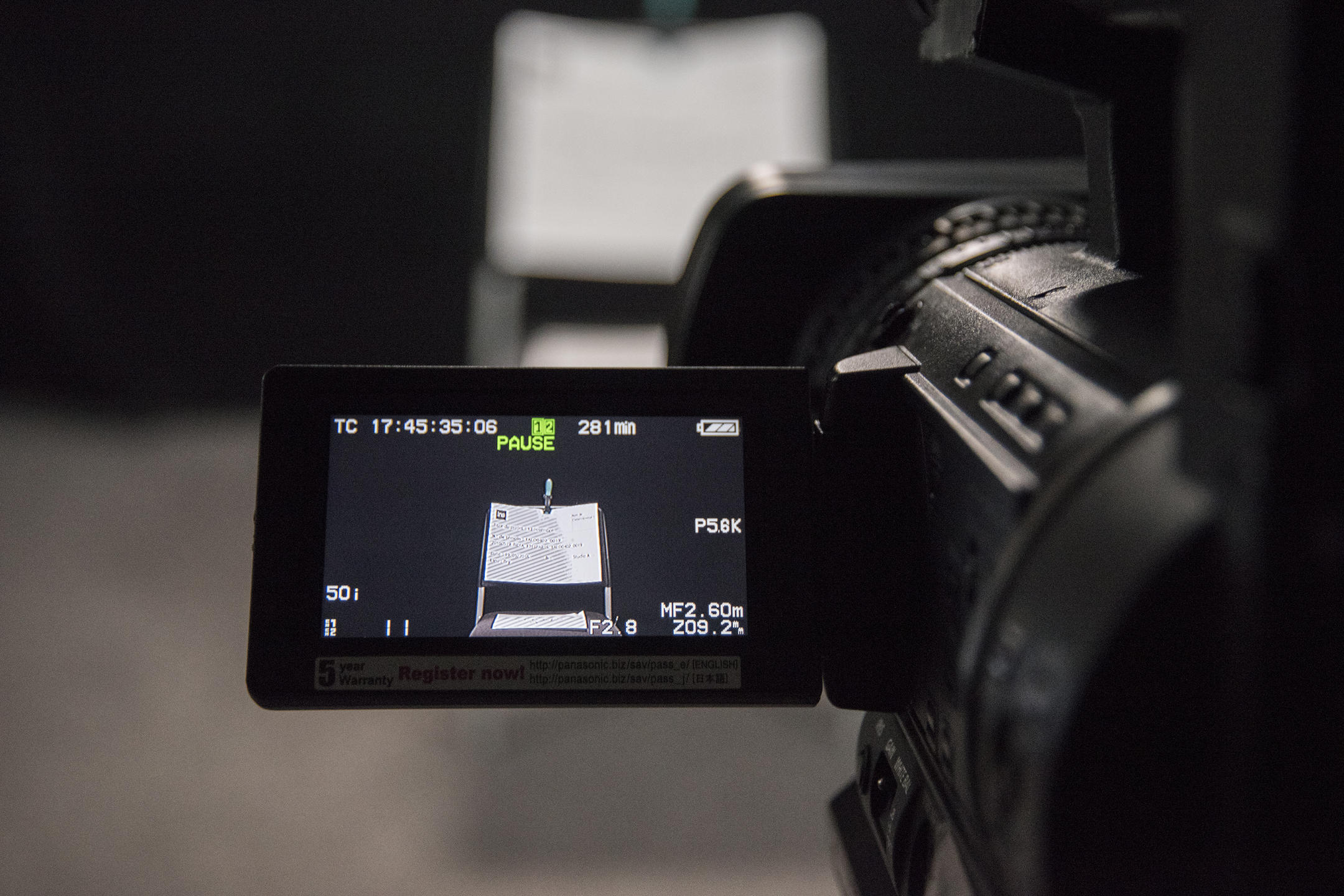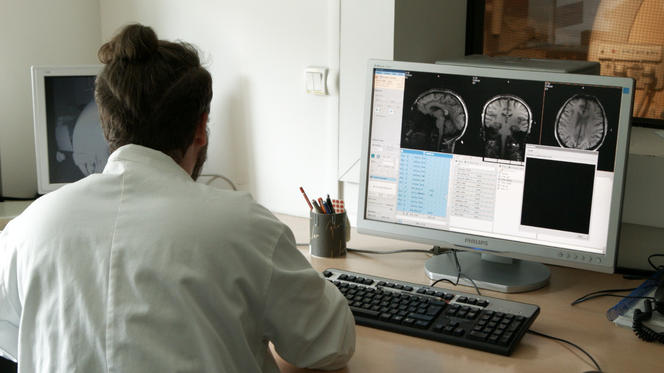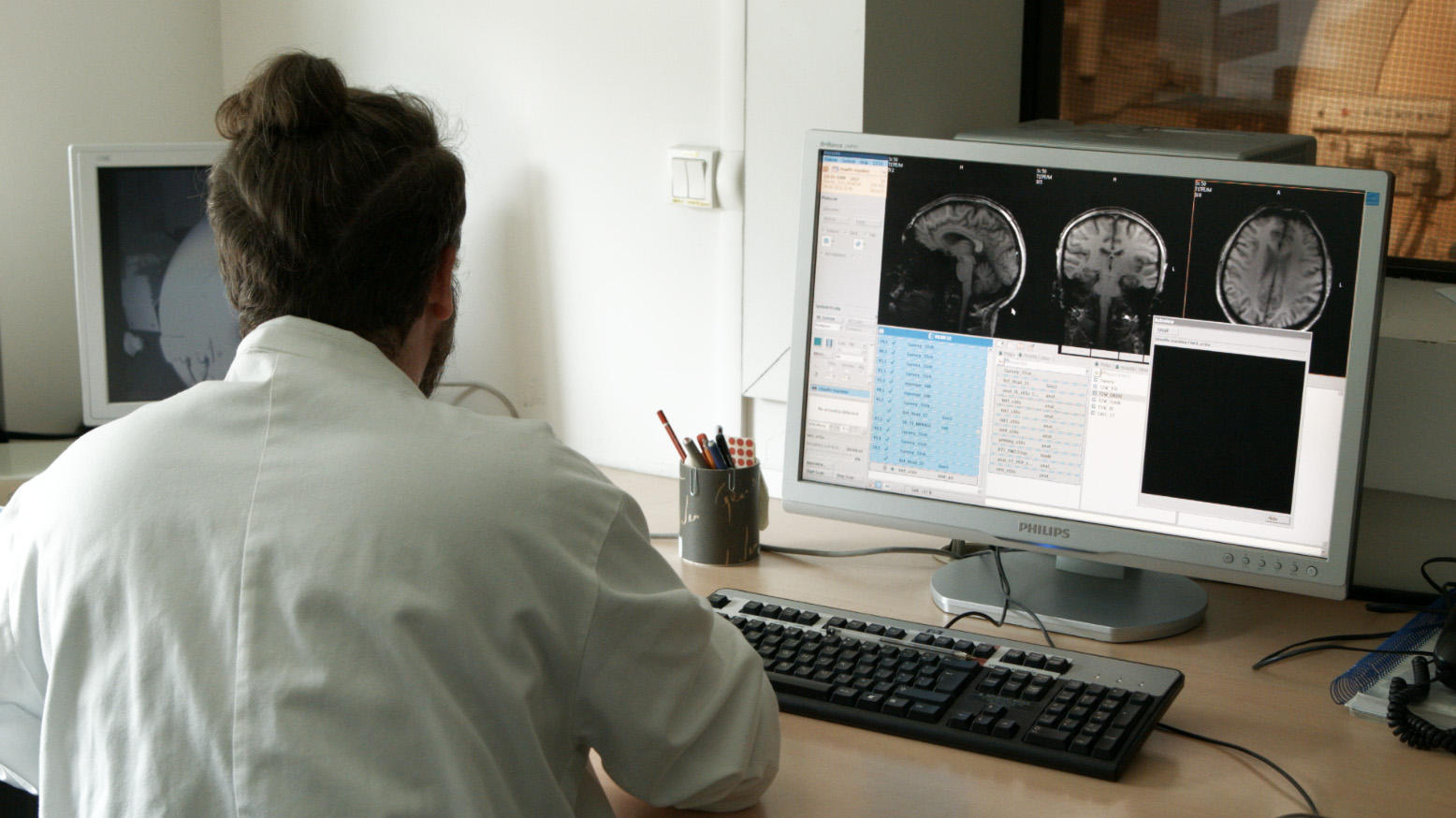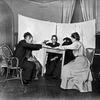You are here
Paris Attacks: What Will We Remember?

How did the idea of the 13 Novembre project come about?
Denis Peschanski:1 As researchers, Francis Eustache and I are very much interested in the construction of memory, he as a neuropsychologist and myself as a historian. We are both also actively involved in a technological platform called Matrice,2 which examines the memories of World War II and September 11, 2001. After the terrorist attacks of November 13, 2015 in Paris, and those of January of the same year, we shared the initial reaction of all French people: incredulity, sorrow… but not helplessness. When CNRS president Alain Fuchs appealed to the scientific community a few days later, asking what scientists could do in response to an event that had traumatized the entire nation, we knew that we had a contribution to make. We see the 13 Novembre program as part of the researcher’s civic duty.
Francis Eustache:3 Yes, exactly. In a way, we felt that we owed it to the victims to mobilize our tools and skills for a project that would give meaning to the whole thing and make sense of it over time. In concrete terms, we were directly inspired by a program carried out in New York after the September 11th attacks: William Hirst, a US psychologist at the New School, collected and compared some 3,000 accounts by people who had lived through those events, and were interviewed after one month, one year, three, five and ten years. This type of longitudinal study, spanning a long period of time, was a first and produced some intriguing results: the first accounts by the witnesses of September 11 were muddled and confused, mostly emphasizing emotions and sensations—especially olfactory. Over the years, the information conveyed by the media and discussed in the family circle was gradually integrated into individual memories in order to build a consistent narrative. But Hirst’s study had its limitations: the printed questionnaires were filled out by the witnesses themselves, the group of participants varied widely from one session to the next, and most importantly, the project remained essentially psychological. 13 Novembre goes much further. It is a unique scientific opportunity to observe the ongoing construction of the individual and collective memory of a major event.
What exactly does the project involve?
D.P.: An tinterdisciplinary research program covering 12 years, it will study the construction and evolution of memory after the terrorist attacks of November 13, 2015. In particular, we hope to elucidate the link between individual and collective memory, how they both evolve over time and influence each other, resulting in a consistent narrative that makes sense for both the individual and for society. Its broad scope makes 13 Novembre a worldwide first: it brings together historians, neuropsychologists, sociologists, legal experts, lexicologists, and mathematicians, among others. Six laboratories4 and several institutions are involved so far, including the CNRS, INSERM, Santé Publique France,5 the Institut National de l’Audiovisuel (INA), the French army's cinematographic service and the Archives de France, mobilizing several hundred people.
In fact, we didn't expect that we would be able to launch such an ambitious project in such a short time—and receive the €2 million we needed to start it up via the French government's Investments for the Future program.
How will the study proceed?
F.E.: In practice, it focuses on a cohort of 1,000 people who were direct or indirect witnesses of the November 13th terrorist attacks in Paris. They are divided into four groups: Circle 1 consists of those directly exposed to the violence, including survivors, people close to the victims and members of the emergency response teams, Circle 2 includes residents of or regular visitors to the areas targeted by the terrorists, Circle 3 comprises Parisians from other neighborhoods and Circle 4, inhabitants of other cities, including Caen (Northwest France) and Metz (in the northeast). Four sessions of filmed interviews will be conducted: the first is already underway and will last until early autumn 2016. The second will take place two years later, followed by a third after five years, and a last round after ten years. We have prepared a multidisciplinary questionnaire that meets stringent ethical and scientific requirements, in particular to avoid upsetting those who have lived through a terrible ordeal. The people in charge of conducting the interviews come from a variety of professional backgrounds (historians, sociologists, anthropologists, psychologists…) and all of them have been trained in an interview protocol developed specifically for 13 Novembre.
Why are the interviews conducted in successive waves?
F.E.: We have known for a long time that the memories that each of us stores are not fixed. Throughout our lifetimes they undergo a subtle process of consolidation and reconsolidation. Every time we call up a memory it’s as though the brain relives it, before encoding it once again. This phenomenon further consolidates the memory, and also transforms it: each recounting is done under certain circumstances in the company of certain people, which induces us to emphasize one element rather than another, or gloss over a detail—not to mention the influence of society at large, the media, our family, colleagues, etc., on how we tell the story. All of these processes are extremely complex and still little known to scientists.
The only thing that remains virtually unchanged over time is the so-called “flash bulb memory”: the memory of the circumstances in which we experienced a significant personal or collective event. To this day everyone remembers where they were and what they were doing on September 11th, 2001, and in the years to come, that will probably be true for November 13th as well.
Does this transformation process also apply to collective memory?
D. P.: Absolutely! Like individual memory, it undergoes a subtle process of construction-reconstruction. And there is a reason for this: rather than focusing on “factual historical truth,” collective memory is a selective representation of past events that become part of a group’s self-image. Through the filter of this memory, we only retain those elements that are perceived as useful for structuring our collective identity, that give meaning to our shared history. This is why the exodus of June 1940 in reaction to the German advances into French territory, which is synonymous with retreat, suffering and even shame, has little place in our memory, even though it directly or indirectly affected millions of people. Conversely, the actions of a minority of French people who participated in the Resistance have become a prominent part of the collective narrative: even though they had no decisive military effect, they conveyed political and ideological values that were essential for the reconstruction of France.
For a historian, observing how this type of collective representation develops in real time, and how it interacts with individual memories, are unique and fascinating opportunities. Besides the four sessions of interviews already mentioned, the 13 Novembre project also includes a partnership with the CREDOC6 which will simultaneously conduct four rounds of opinion surveys that will provide a “snapshot” of our collective memory of the attacks.
The interviews will be filmed by the National Audiovisual Institute and the French army's cinematographic service, both of which are full-fledged partners in the project. What is the purpose of the filming?
D.P.: We decided to film the interviews for two reasons. First of all for scientific purposes, of course, because this video content will be useful in many types of studies. Using big data and modeling techniques, we will be able to observe the witnesses’ facial expressions and emotions, the rhythm of their speech, their silences, etc. Their accounts will also be transcribed and subjected to textometric analysis to determine which words are used most often and at what frequency, which terms are often associated, etc. The second reason for filming the interviews is a matter of legacy. It is important for us that these accounts be archived and handed down to future generations, as they are a precious memory of terrible events for the national community.
The interviews will be the cornerstone of 13 Novembre, and you are now in the process of contacting witnesses. But the project comprises other elements, including a biomedical study on post-traumatic stress…
F. E.: Our work for 13 Novembre focuses on an exceptional episode in history. These were acts of extreme violence that for many witnesses triggered a variety of reactions called “post-traumatic stress disorder” (PTSD). Sufferers are haunted by intrusive thoughts and images, and relive the event as though it were happening all over again. Symptoms include sudden involuntary movements, sweats, sleep problems, and the development of evasive behavior patterns in an attempt to avoid any situation that could bring back memories of the attacks. Some build up defense mechanisms and recover better than others. We want to study all of this very closely in order to produce a complete description of these problems and how they affect the brain. Out of the 1,000 interviewees, the 180 people in Circles 1 and 2—those who were most directly affected by the attacks7—will be given neuropsychological tests as well as anatomical and functional MRIs at the Cyceron biomedical imaging platform and the research unit that I head in Caen.
Aren’t you concerned that the tests themselves could trigger new cycles of stress?
F. E.: It would be unthinkable—and of no scientific use—to subject these people to new traumatizing images to study the mechanisms of post-traumatic stress. We have decided to use a method recently developed in the UK called “think-no think.” PTSD sufferers experience intrusive thoughts and images as though they are happening in the present. The think-no think paradigm models this situation without introducing any traumatic elements. We train the participants to associate a word with an unrelated object—for example, the word “computer” and the image of a tree. We ask them to continue thinking of the association while we perform an MRI scan, and then to suppress the thought. This data, correlated with other information (on the witnesses’ health and their lives in general), should improve our understanding of how the mind overcomes PTSD.
13 Novembre also looks at social networks. What can you tell us about that part of the program?
D. P.: That aspect will be entrusted to researchers from the INA and the Institut des Sciences Complexes, each of which has developed tools for mining and analyzing content from social networks. The idea is to analyze all the posts exchanged during the November 13th attacks, especially in terms of links (to videos, news websites, etc.), in order to see what goes “viral” and how during that type of events. To see how information is disseminated, as well as rumors, everything will be analyzed, including links to conspiracy theory sites. Social networks, like the traditional media before them, play a key role in emotional response, and thus in the construction of memory. This is the mechanism that we want to investigate. All these analyses will begin in 2017. For the moment, the most urgent tasks are the interviews and cerebral imaging. The quality of all future studies will depend directly on that of the data we collect.
Related topic: Terrorism: Testing our Connected Solidarity
- 1. Denis Peschanski is a CNRS senior researcher at the Centre d’Histoire Sociale du XXe Siècle.
- 2. Matrice is an équipement d’excellence ("facility of excellence") created in 2011 to conduct interdisciplinary studies on memory. www.matricememory.fr
- 3. Francis Eustache is a research director at the Ecole Pratique des Hautes Études (EPHE) as well as director of the Cyceron imaging platform and the Laboratoire de Neuropsychologie et Neuroimagerie de la Mémoire Humaine.
- 4. The partner laboratories are: the Centre de Recherche sur les Liens Sociaux (Cerlis,CNRS/Université Paris V), the Laboratoire de Neuropsychologie et Neuroimagerie de la Mémoire Humaine, the Laboratoire de Neuropsychiatrie de Montpellier, the Institut des Sciences Complexes, the Centre de Recherche sur les Médiations (CNRS / Université de Lorraine / ILF) and the Laboratoire Bases, Corpus et Langages.
- 5. The former Institut National de Veille Sanitaire (French Institute for Public Health Surveillance) will conduct an epidemiological study one year after the attacks in order to analyze their psychotraumatic impact and the effectiveness of the response operations.
- 6. Centre de Recherche pour l’Observation et l’Étude des Conditions de Vie.
- 7. The members of Circle 4, who were furthest removed from the attacks, will also be examined to serve as a control group.


